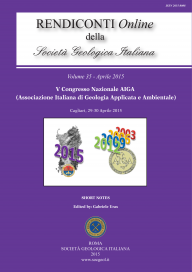
Application of CAESAR for catchment and river evolution
Antonio Pasculli (a), Chiara Audisio (a,b) & Nicola Sciarra (a)
(a) Department of Engineering and Geology University G. D'Annunzio of Chieti-Pescara, Via dei Vestini 31, 66100 Chieti, Italy. E-mail: a.pasculli@unich.it
(b) Città Metropolitana di Torino, Corso Inghilterra 7, 10138 Torino, Italy.
Volume: 35/2015
Pages: 224-227
Abstract
In recent years the application of "reduced complexity models" (RCM) is proving to be an excellent alternative resource for evaluating the hydrological response of catchments within a period of time up to decades. In addition, the past two decades have seen significant improvements in the study of river morphology, in particular with regard to the analysis of the processes governing the fluvial evolution resulting from the erosion and transport of sediments. Hence, this paper is aimed at the discussion of the employment of the research code CAESAR, based on cellular automaton (CA) approach, in order to evaluate the water and the sediment outputs from an alpine catchment. Then, the output of the model is applied to a river reach in order to forecast the river evolution in the near future.
Keywords
Get Full Text